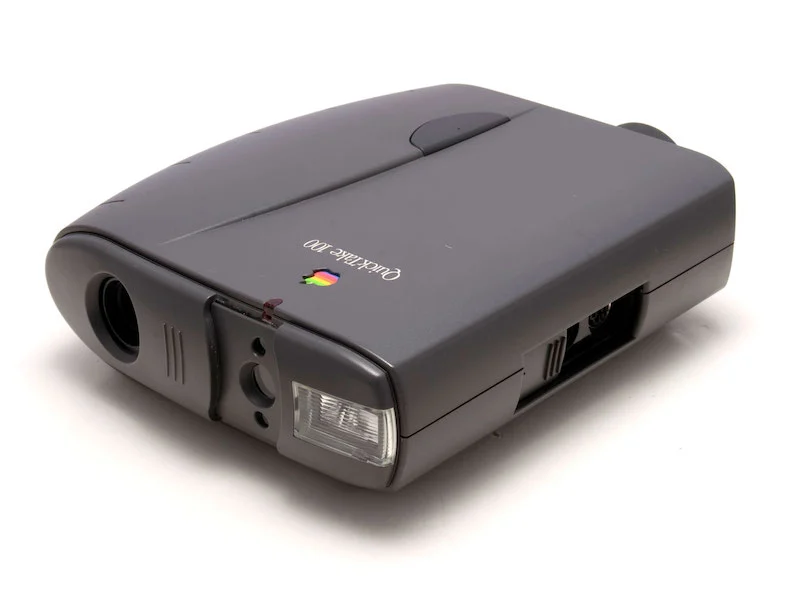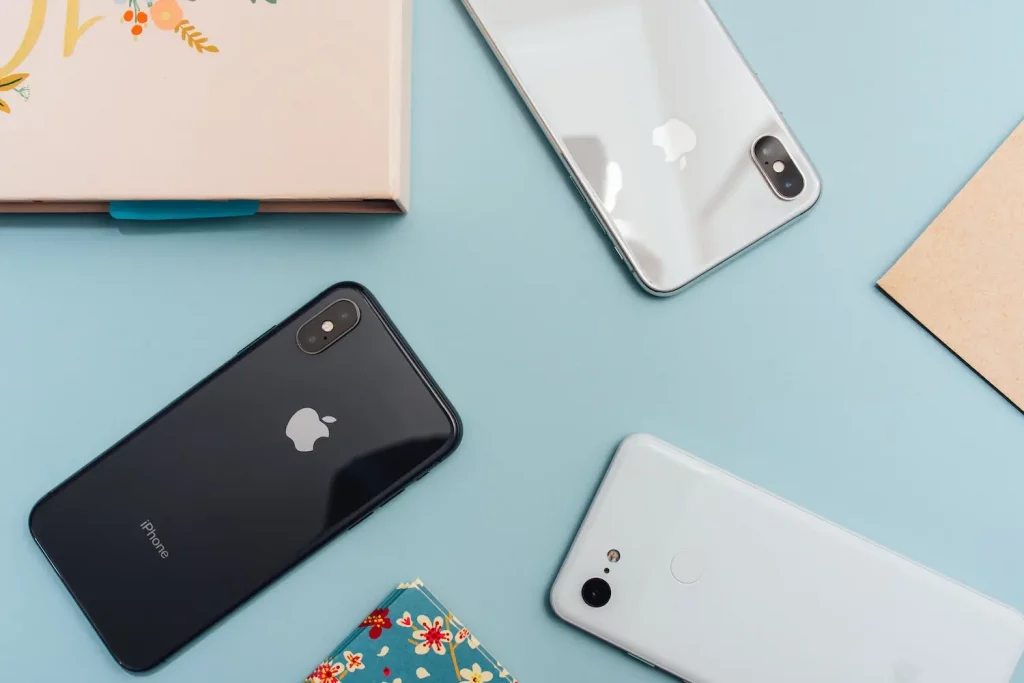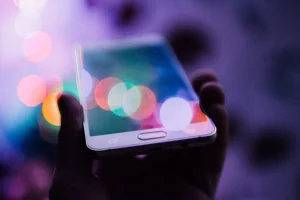Apple is one of the companies that have revolutionized the world of photography by offering the opportunity for as many people as possible to take photos using their mobile phones.
Since the release of the iPhone in 2007, Apple has continuously improved its smartphones, to the point of offering professional-quality results while simultaneously editing Apple Photos to facilitate photo management and editing. Three decades of innovation have enabled rapid and continuous change.
How did the link between photography and the Apple brand gradually become established? Focus on Apple and the history of photography.
Table of contents
Quicktake 100: Apple's first camera
When we talk about photography at Apple, we logically think of the iPhone. However, the American firm did not wait for the marketing of its first smartphone to enter the photography market.
Indeed, Apple offered its first digital camera in 1994, 13 years before the release of the first iPhone. At that time, the world of photography was undergoing a real revolution with digital cameras and Apple naturally established itself in this sector with its QuickTake 100 camera.
The QuickTake 100 was a small revolution in the history of photography as it was the first digital color camera sold for less than $1000. It has a 640×480 pixel CDD sensor and can store up to 8 photographs in its internal memory. This is still a long way from today’s capabilities, but in its time, the QuickTake 100 was the very best.
It should be noted, however, that the QuickTake 100 featured the Apple logo, although it was manufactured by Kodak. The superior version, the QuickTake 200, was manufactured by Fujifilm.

In 2007, the first iPhone revolutionized the history of telephony... but not yet that of photography
The very first iPhone was released in 2007 and initially revolutionized the world of telephony. The iPhone was not just a mobile phone. It incorporated an iPod function and a way to access the Internet. And that’s not all. The very first iPhone model also had a rear camera for taking photos.
If the creation of the iPhone is a milestone in the history of telephony, it is less so in the history of photography. The quality of photos that could be taken with the first iPhone remained limited. The rear camera still had a 2MP (megapixel) sensor, which is what was best at the time for cell phones.
Photography was not a priority for Apple at this time. The camera of the next version of the iPhone (iPhone 3G) therefore remained the same. It was not until the iPhone 3GS that the camera improved slightly with a 3 MP sensor.
2010 and the iPhone 4: a real camera phone
It was with the arrival of the iPhone 4 in 2010 that the history of photography was for the first time deeply marked by Apple.
The iPhone 4 was presented as a high-end smartphone. So, in addition to all its advantages related to telephony, it also incorporated the best photo quality of the time for a cell phone.
The iPhone 4 featured a 5 MP rear sensor capable of shooting HD videos (720p) for the first time, at a time when the most advanced televisions only had a maximum quality of 1080p.
And Apple didn’t stop there. For the first time, the iPhone 4 introduced a front camera, which would of course usher in the selfie revolution thereafter. Unfortunately, the iPhone 4’s front camera has a 0.3 MP sensor, which only made FaceTime calls possible at that time. We would still have to wait a bit for the front camera of the iPhone to be able to take good-quality photos.
Rapidly evolving photo quality from iPhone 4S to iPhone 6S with 8 megapixels
Starting with the iPhone 4, Apple focused more on improving the photo quality of its iPhones to allow its customers to take good-quality pictures. The company therefore reinforced its role as a major player in the history of photography, starting with the release of the iPhone 4S and its 8-megapixel rear sensor.
Thereafter and up until the iPhone 6 S, the rear sensors were all equipped with the same sensor, but Apple offered new features and tools to improve the quality of photographs taken with an iPhone:
- the iPhone 5 had a 2 MP front sensor;
- the iPhone 5 S allowed you to take 1080p (full HD) videos;
- the iPhone 6 Plus offered OIS stabilization.
The 12-megapixel era: Apple delivers professional photo quality
In 2015, Apple ushered in the 12-megapixel era with the launch of the iPhone 6S. This iPhone model did not have optical stabilization, but it allowed you to make videos at 2160p and 30fps. It also featured a 5-megapixel front camera. Selfies could be taken with reasonable photo quality.
For 7 years, the iPhone sensor would not change despite the different evolutions. However, Apple continued to improve the photo quality of its devices:
- the iPhone 7 has OIS stabilization and the front camera has a 7MP sensor;
- the iPhone X has a dual camera with a 12 MP telephoto sensor for x2 optical zoom and Face ID;
- the iPhone 11 has a 12 MP front camera and an ultra-wide rear camera.

The iPhone 14 Pro: a turning point in the history of mobile photography by Apple
If Apple has very quickly evolved the photo quality of its iPhones between the 4 and 6S, since 2015, the 12 megapixel era has brought only secondary improvements. Without mentioning the arrival of the iPhone 14 Pro and the iPhone 14 Pro Max in 2022 which are introducing a new revolution in the history of mobile photography.
Imagine quadruple the photo quality: this is indeed what the iPhone 14 Pro (and the Pro Max version) allows with its rear sensor with not 12, or even 24 or 36, but 48 megapixels. Apple is therefore taking a huge leap forward to offer professional photo quality and enable the recording of 8K videos.
The iPhone 14 Pro has 3 cameras. The 48 MP main camera is equipped with a quad-pixel sensor. The 12 MP central sensor allows you to use the x2 telephoto lens and is very convenient for Portrait mode.
In addition, the Photonic Engine that applies Deep Fusion technology significantly improves photographic performance in low-light conditions.
The iPhone 14 Pro is packed with a multitude of other features making it a comprehensive and accessible tool for both beginners and professional photographers:
- a third 12 MP ultra wide-angle camera;
- a telephoto lens for 3x optical zoom;
- a new True Tone flash with 9 LEDs;
- a new TrueDepth camera with ƒ/1.9 aperture;
- photo processing features (night mode, wear mode, etc.) ;
- an Action mode for making professional videos.
There is no doubt that Apple will continue to make photographic history in the future by offering ever more advanced cameras. It is therefore to be expected that future iPhone models will revolutionize the world of mobile photography once more, especially as Apple develops Apple Photosin parallel. So, in addition to its built-in iPhone cameras, the Apple brand also offers increasingly advanced software for photo management and editing.








